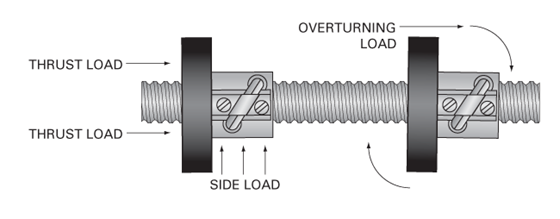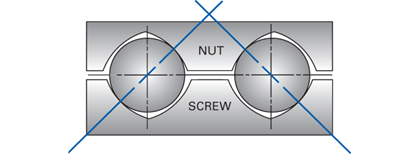Ball Screw Load Definitions
Ball Screw Load Definitions
Static Load
The maximum thrust load - including shock - that can be applied to the ball nut without damaging the assembly.
Dynamic Load
The thrust load in pounds which, when applied to the ball nut and rotating screw assembly will result in a minimum life of 1,000,000 inches of travel. Metric screw designs are per ISO 3408 and show the load ratings in kilonewtons for 1 million revolutions.
Tension Load
A load that tends to "stretch" the screw.
Compression Load
A load that tends to "squeeze" the screw.

Overturning Load
A load that tends to rotate the nut radially around the longitudinal axis of the screw.
Side Load
A load that is applied radially to the nut.
CAUTION: Although a side load will not prevent the ball screw from operating, the nut is not designed to operate with a side load, such as those generated from pulleys, drive belts, misalignment, etc.
Thrust Load
A load parallel to and concentric with the axis of the screw.

Preload
Preload is an internal force introduced between a ball nut and screw assembly that eliminates free axial and radial lash. Preloaded assemblies provide excellent repeatability and increased system stiffness.
Preloading is achieved either by using two nuts and forcing them apart or by shifting the circuits within a single nut. Nook Industries has a variety of preloaded ball nut designs available.
